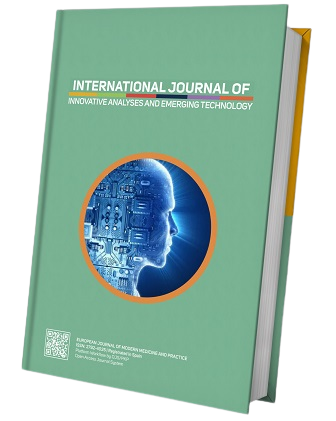Assessment Of The Impact Of Human Relationship On School Performance In Senior Secondary Schools In Katsina State, Nigeria
Keywords:
Human Relationship, School Performance, School AdministrationAbstract
The research is assessment of the impact of Human Relationship on School Performance in Senior Secondary Schools in Katsina state. The population consisted of three thousand, seven hundred teachers (3700), one hundred and sixty one (161) principals and ninety (90) quality assurance staff. Using the Research Advisors (2006) sampling table, three hundred and fifty seven teachers (357) with 320 returned, eighty, quality assurance staff with seventy five (75) returned and 132 principals with 130 returned. Five objectives were used to guide the study leading to the development of five research questions and one null hypothesis focusing on the impact of human relation on school performance. A four fingered Likert scale questionnaire was developed and used to seek for respondents’ opinions on the issues raised. Descriptive statistics were used to analyze the data showing lesser variation in the respondents’ opinions. The findings revealed the cumulative aggregate scores in all the five research questions to contain positive disposition of the respondents opinions on the issue raised in the research question. Additionally, the high mean scores of 2.74, 2.98, 2.55, 2.77 and 2.67 as well as the standard variation shows lesser variability in the opinions expressed by the respondents to imply that there is close relationship. The study therefore suggests, among other things tailored motivational strategies to go abreast with students need fostering positive human relationship.
References
C. MacCann, “Emotional Intelligence Predicts Academic Performance: A Meta-Analysis,” Psychol. Bull., 2019, doi: 10.1037/bul0000219.
H. Zhu, “Wood-Derived Materials for Green Electronics, Biological Devices, and Energy Applications,” Chem. Rev., vol. 116, no. 16, pp. 9305–9374, 2016, doi: 10.1021/acs.chemrev.6b00225.
J. Donnelly, “Physical activity, fitness, cognitive function, and academic achievement in children: A systematic review,” Med. Sci. Sports Exerc., vol. 48, no. 6, pp. 1197–1222, 2016, doi: 10.1249/MSS.0000000000000901.
M. S. Hagger, “A Multilab Preregistered Replication of the Ego-Depletion Effect,” Perspect. Psychol. Sci., vol. 11, no. 4, pp. 546–573, 2016, doi: 10.1177/1745691616652873.
C. M. Hood, “County Health Rankings: Relationships between Determinant Factors and Health Outcomes,” Am. J. Prev. Med., vol. 50, no. 2, pp. 129–135, 2016, doi: 10.1016/j.amepre.2015.08.024.
R. M. Rosenfeld, “Clinical Practice Guideline,” Otolaryngol. - Head Neck Surg. (United States), vol. 154, 2016, doi: 10.1177/0194599815623467.
S. Claro, “Growth mindset tempers the effects of poverty on academic achievement,” Proc. Natl. Acad. Sci. U. S. A., vol. 113, no. 31, pp. 8664–8668, 2016, doi: 10.1073/pnas.1608207113.
N. L. Hair, “Association of child poverty, brain development, and academic achievement,” JAMA Pediatr., vol. 169, no. 9, pp. 822–829, 2015, doi: 10.1001/jamapediatrics.2015.1475.
R. Kowalski, “Psychological, physical, and academic correlates of cyberbullying and traditional bullying,” J. Adolesc. Heal., vol. 53, no. 1, 2013, doi: 10.1016/j.jadohealth.2012.09.018.
B. De Smedt, “How do symbolic and non-symbolic numerical magnitude processing skills relate to individual differences in children’s mathematical skills? A review of evidence from brain and behavior,” Trends Neurosci. Educ., vol. 2, no. 2, pp. 48–55, 2013, doi: 10.1016/j.tine.2013.06.001.
A. Singh, “Physical activity and performance at school: A systematic review of the literature including a methodological quality assessment,” Arch. Pediatr. Adolesc. Med., vol. 166, no. 1, pp. 49–55, 2012, doi: 10.1001/archpediatrics.2011.716.
Emmery, D. (2022) Indicators of School Performance. http://brenz.blogspot.com2024/indicators
Federal Republic of Nigeria (2004). National Policy on Education, NERDC
Katsina State Ministry of Education, Katsina
Newman, D. (1977). School as a Social System. www.books.google.com.nglb Retrieved 6/7/2024
Pearson, R. (1991). Approaches in Organization and Management. http://catalogue.pearsoned.co.UK.pearsoned.hihired Retrieved
Perelemode, V. F. (1999). Introduction to Educational Administration, Planning and Supervision, Ikeja, Lagos, Joja Educational Research and Publishers Ltd.






